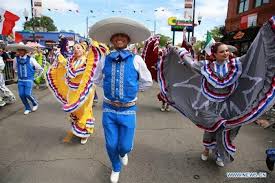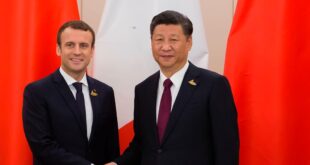Wagdy Adbaziz
On September 16 each year, Mexico pulses with revolutionary energy and national pride, honoring Independence Day, known as “Grito de Dolores” (Cry of Dolores), which ignited the war against Spanish colonial rule in 1810. This holiday is more than a calendar date—it’s a symbol of a brave Mexican people’s decade-long struggle against oppression, culminating in freedom in 1821. In 2025, as celebrations approach, the nation renews its vow of unity amid economic and social challenges, with millions gathering in public squares to relive the historic moment that reshaped Latin America.
The Mexican People’s Struggle: From the Priest’s Cry to the Declaration of Freedom
The saga began on September 16, 1810, when Father Miguel Hidalgo y Costilla, in the village of Dolores, rang his church bell and issued the “Grito de Dolores,” calling for armed revolt against Spanish colonial rule.
Hidalgo, a champion of indigenous and marginalized rights, voiced the fury of a Mexican populace suffering economic exploitation and racial discrimination under the Spanish Empire, where Europeans controlled land and trade while natives lived in poverty.
What followed was a massive uprising: Hidalgo led a popular army of 80,000 fighters, mostly peasants and indigenous people, storming Guanajuato and freeing prisons while seizing weapons. Though Hidalgo was executed in 1811 after a military setback, he became the revolution’s icon.
The fight continued under José María Morelos, who established the Congress of Anáhuac in 1813 to draft a constitution guaranteeing equality and civil rights, only to be executed in
The 11-year bloody conflict, filled with betrayals and alliances, ended on September 27, 1821, when General Agustín de Iturbide declared independence via the Treaty of Iguala, uniting rebels and pro-Spanish conservatives.
It was a true grassroots Mexican effort, involving hundreds of thousands of indigenous and creole participants, leading to a short-lived Mexican Empire before transitioning to a republic in 1824. This legacy today reminds of revolutionary values: liberty, equality, and national dignity.9f91a559208e
Forms of Celebration: From the Presidential Cry to Enchanting Fireworks
Official festivities kick off at 11 p.m. on September 15, when the Mexican President stands in the National Palace before massive crowds in Mexico City’s Zócalo square, reenacting the “Grito de Dolores” with a resounding cry: “¡Viva México!” repeated three times amid cheers and bell rings. This ritual is broadcast nationwide and echoed in every public square across the country, with attendees donning traditional attire like the charro suits for men and China Poblana dresses for women.
On September 16, a national public holiday closes schools and offices, filling streets with vibrant parades: school marches in historical costumes depicting revolutionary heroes, folkloric dances like Jarabe Tapatío, and mariachi bands playing anthems such as “Cielito Lindo.” Spectacular fireworks light up the sky, especially in Zócalo with thousands of rockets in a hours-long display, while street parties feature games like piñata-breaking filled with candies.
Food plays a starring role: tamales stuffed with pork or cheese, chorizo sausages, guacamole with tortillas, and drinks like atole de granada (sweet corn beverage).
In 2025, celebrations extend to U.S. communities, like Chicago’s Little Village parade on September 14, drawing thousands despite immigration concerns, or postponed events in Waukegan due to federal raid fears.87b67c943f3b Digital twists include live TikTok streams of the cry to engage younger generations.
A Renewed Legacy: A Holiday That Unites and Inspires
September 16 is not just a nod to the past but a call for ongoing justice in modern Mexico, facing issues like migration and inequality.
As President Claudia Sheinbaum noted in a prior address: “Hidalgo’s cry still echoes for freedom today.
Thus, this holiday endures as a beacon of Mexican resilience, blending heritage with hope for a brighter future.
 موقع وجه أفريقيا موقع وجه أفريقيا هو موقع مهتم بمتابعة التطورات في القارة الأفريقية
موقع وجه أفريقيا موقع وجه أفريقيا هو موقع مهتم بمتابعة التطورات في القارة الأفريقية



